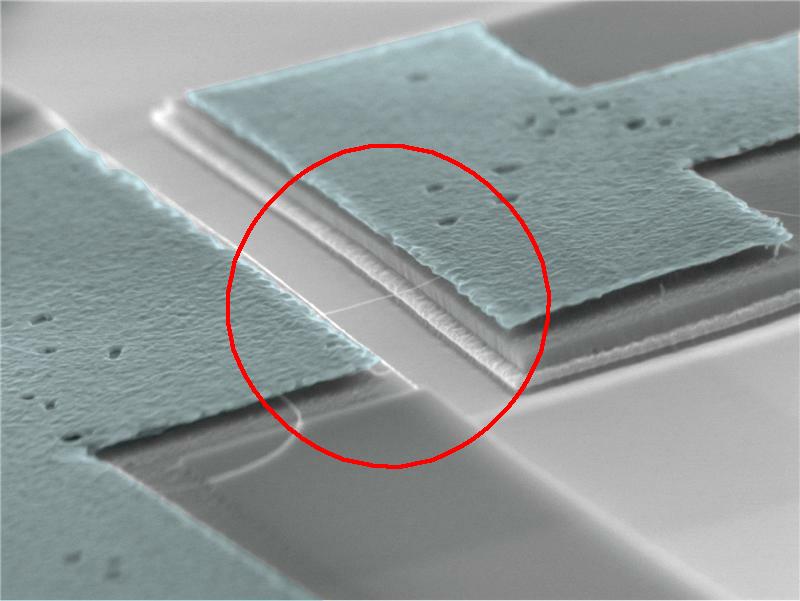Researchers in the Kavli Institute for Nanoscience at TU Delft basically suspended a carbon nanotube, comparable in size to an ultra-small violin string, and then applied an alternating electric field to the nanotube using an antenna.
As a result of the alternating electric field, the suspended nanotube begins to vibrate at a certain frequency. The nanotechnologists were then able to vary the number of electrons on the nanotube. The number of electrons ‘allowed’ on the nanotube causes very slight changes in the vibration behaviour of the tube. Thus the frequency at which the nanotube vibrates shifts very slightly each time an electron is added. The scientists have succeeded in charting the influence of the presence of just a single electron. The entire process took place in a measurement environment that was cooled to almost absolute zero.
Suspended nanotubes vibrate at an extremely high frequency and thus exhibit new quantum effects. These suspended nanotubes thus form an interesting field of research; moreover, it has recently become possible to manufacture these items to a high quality.
The researchers of the Kavli Institute for Nanoscience in Delft managed for the first time to capture a single electron in a carbon nanotube and this success was made possible by a new method of making ultra-clean nanotubes.

Look close. See that string? What you see in this electron microscope image is 800 nanometer long - 800 millionths of a millimeter. Credit: TU Delft
The research being conducted at TU Delft is, apart from the acquired theoretical knowledge, also important for work such as the development of NEMS (Nano Electro Mechanical Systems). These are extremely small electromechanical systems such as tiny switches and measuring instruments. NEMS are regarded as the logical successors to the slightly larger MEMS (Micro Electro Mechanical Systems) that already constitute a sector of industry that is worth billions. These MEMS are already found, for example, in the acceleration sensors of airbags in cars. In the course of time, a breakthrough to the nano-level can be expected.
When an electron is added to the nanotube, the motion of the electron hopping onto it creates a 'dip' in the measured vibration frequency. The nanotube vibrates at a rate of 140 milion times per second (Hz). For illustrative purposes that frequency is lowered here to a detectable range around 1000 Hz. Credit: TU Delft
The research took place at the Kavli Institute for Nanoscience at TU Delft, headed by Prof. Leo Kouwenhoven and Prof. Herre van der Zant. The primary author of the article in Science is Dr Gary Steele. The research is being co-funded by the Foundation for Fundamental Research on Matter (FOM) and the Netherlands Organisation for Scientific Research (NWO).
Article: G. A. Steele, A. K. Hüttel, B. Witkamp, M. Poot, H. B. Meerwaldt, L. P. Kouwenhoven, and H. S. J. van der Zant, 'Strong Coupling Between Single-Electron Tunneling and Nanomechanical Motion', Published online 23 July 2009 DOI: 10.1126/science.1176076






Comments